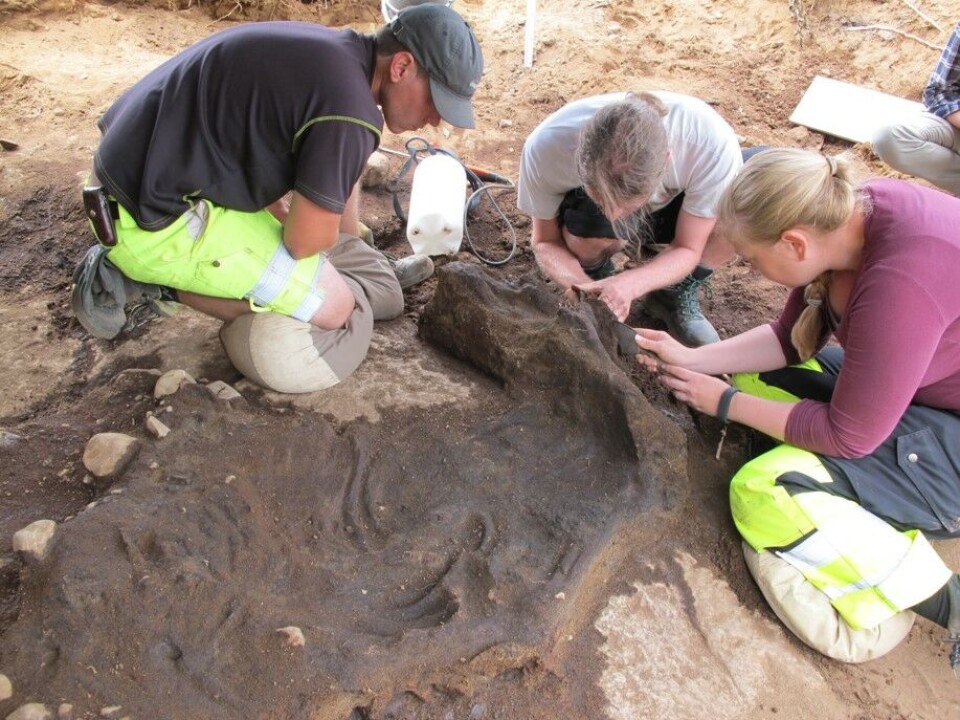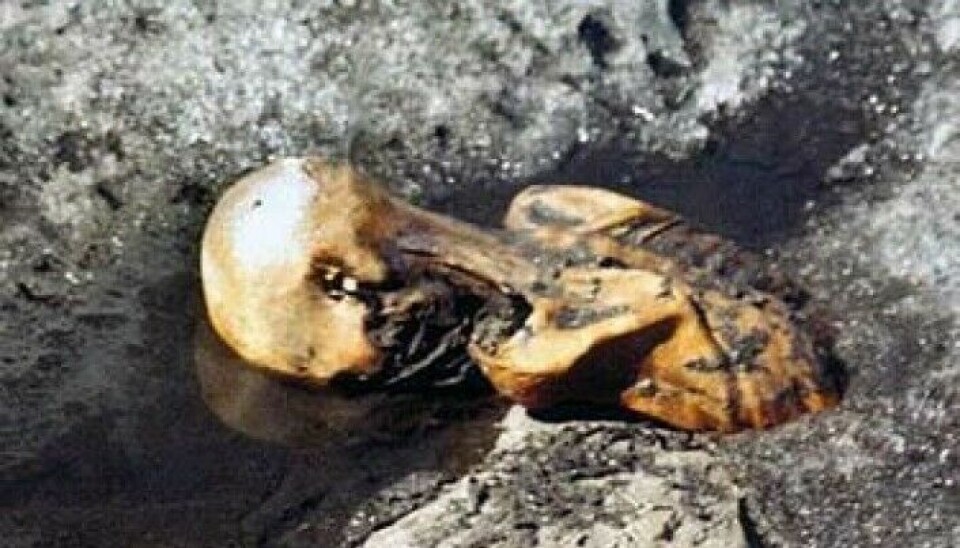
Archaeologists' most exciting finds:
Unearthed some of the oldest human bones ever found in Norway
“I was completely overwhelmed by the responsibility,” says archeologist Gaute Reitan.
Reitan and his
archaeologist colleagues discovered the grave of a Stone Age person.
“We learned a great deal more about the Stone Age after this find,” he says.
First, they had to extract the bone remains.
“Poorly preserved and soft bones had to be extracted from the concrete-hard sand they were embedded in,” he says.
But the archaeologists were rewarded for their efforts:
They uncovered some of the oldest human bones ever found in Norway.
Usually just stone and flint
“The find was especially exciting because it was intact human bones from an elaborate grave,” says Reitan.
Despite the bones had the consistency of a paste, they were well-preserved by Stone Age standards. They had been there for 8,000 years.
“We usually only find stone and flint from that era,” says Reitan.
The period is called the Stone Age for a reason: Organic materials like bones, leather, and wood have usually long since rotted away.
But here, the human bone was buried next to a damp rock and then securely encased in hard sand.

“Bones allow us to examine DNA and get information about who came here after the Ice Age,” says Reitan.
Stone Age people and adornment
The burial site also provides insights into their rituals and ways of life.
“First of all, someone spent time digging a huge hole in the ground. Then the deceased was placed with their legs close together, possibly tied to keep them in that position,” he says.
The archaeologists also found traces of other organic materials.
“The grave might have been lined with elk skin,” says Reitan.
The deceased was likely adorned.
“No clothing was preserved, but we can imagine an outfit of very stylish leather and fur, perhaps decorated with both feathers and snail shells,” he explains.
He explains that humans have always enjoyed adorning themselves and were creative even in prehistoric times.
A study from the University of Cambridge shows how Stone Age people attached beads made of elk teeth to their clothes.
“They made a pleasant sound while dancing and can be seen as rhythm instruments,” says Reitan.
Most viewed
The Flintstones and poor communication
Reitan says that the popular perception of Stone Age people is often influenced by simplistic stereotypes.
We likely have Hollywood films and cartoons like The Flintstones to thank for that.
“Many imagine that Stone Age humans were somewhat ape-like, lacked language, and walked hunched over,” he says.
But that’s not the case.
“They looked like you and me, adorned themselves in their finest attire, and were buried with care,” he explains.
Reitan admits that he and fellow archeologists may not have communicated this well enough.
“They were incredibly skilled craftsmen, capable of making clothes, tools, and weapons of various kinds,” he says.
This is knowledge we should not dismiss.
“This happens quickly when we primarily focus on the few items that have survived,” he says.
Reitan believes we should depict Stone Age people as complex and varied as us, with their own fashions, technologies, and social structures.
A huge responsibility
“What kind of responsibility do you feel during such excavations?”
“Such a rare and significant find comes with an enormous obligation to handle it in the best possible way,” he says.
One wrong move with the chisel, and the find could collapse.
They consulted the international archeological community on the best way to handle the discovery.
“We were a strong team that together managed to preserve an exceptionally significant find in a proper manner,” he says.
A Norwegian Ötzi
“What’s your dream find?”

“That’s a good question. The answer would probably be a Norwegian version of Ötzi,” says Reitan.
Ötzi, also called the Iceman, was found in the Alps between Italy and Austria.
“He was encased in ice and has been mummified in permafrost for thousands of years. His remains show that he grew up in one area and then moved to another,” he says.
His stomach contents reveal his last meal and where he probably ate it.
The Iceman provides a unique opportunity to study a person from the past in great detail.
“Imagine making such a discovery in a Norwegian snowdrift,” he muses.
———
Translated by Alette Bjordal Gjellesvik
Read the Norwegian version of this article on forskning.no







































